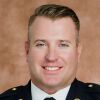Over 35 years ago, I began my journey toward becoming a firefighter. I had the good fortune of working with dedicated mentors and trainers along the way. Many of you can say the same.
Unfortunately, some of you might not have been so lucky. For some of you, training consisted of a chain of information rooted in a single perspective – a chain of information bound by traditions and limited in growth opportunities. Take a moment and follow me on this thought.
Thirty years ago, I was taught by an instructor who had 25 years on the job. That instructor received their initial training from another 25-year veteran. That’s 50 years of institutional knowledge spanning three generations – an unbroken chain of knowledge rooted in a single perspective. And if we follow this chain back several more generations, my training could have been rooted in the work of Ben Franklin. I’m certain the work is different today than when Mr. Franklin started that first fire brigade, and I get it, this is an extreme way to view the chain of learning, but there is some truth to idea that we can get stuck on a single chain of information, limiting us from gaining perspective and accepting new ideas.
Sears vs. Amazon
Let’s take a little journey. Who remembers Sears? The iconic retailer provided mail-order and brick-and-mortar stores throughout America – the creators of Craftsman tools, Kenmore appliances and DieHard batteries. Back in the day, you could order anything from toilet paper to a house and it would be shipped to your door. Where is Sears today?
Now, who remembers how Amazon started? It shipped hard copy books to your door. What is Amazon today? It’s hard to put into words how much it has expanded.
What correlations can we draw from the demise of Sears and the growth of Amazon? Do you think the Sears perspective chain was ever broken, or do you think they just kept repeating what they have always done? What kept Sears from evolving with the times, and what pushed Amazon to continue to evolve?
The fire service falls into some of these same traps, and I fear we sometimes fall closer to the Sears model than the Amazon model. We can create every excuse in the world: We are government, not business; we are mission specific; our traditions are what bind us; we are different. The excuses are just that, excuses. But there should be no excuse for limiting our learning and narrowing our perspective. When we expand our perspective, we can provide better service for our members and community while still holding onto our values and traditions.
Expanding our perspective
Firefighters are like pack animals. Beyond traveling in the same circles and eating the same food, we attend the same conferences, read the same websites, watch the same videos, and idolize the same people and departments. Our perspective is narrow – it’s us, the fire service, an insular group of likeminded members.
To gain perspective, we must step side our comfort zone and expand our sphere of influence.
How do we do this? Participate in in non-fire event and training. Seek discomfort and join a civic group or volunteer on a board that has nothing to do with the fire service. Opportunities like this will give you a different perspective of your community and possibly how your department fits into your community.
Another option: Get out of your comfort zone – physically. Leave your region, go study a department that’s outside your region. After all, you might learn something new and different. If you have the resources and ability, leave the country to experience the international fire service. I promise that you will see crazy things that work for them. Could they work for you?
Gaining these perspectives might help open your mind to new ideas. The challenge when you do step out of your shadow: Don’t allow yourself the knee-jerk reaction “that won’t work here.”
Implement what you learn
Chief Alan Brunacini used to say that, for some, 25 years of service was essentially one year repeated 25 times, underscoring that years of experience does not always equate to knowledge. So, how do we ensure this is not the case for ourselves and our members? How do we implement what we have learned through newfound perspectives?
First, recognize that gaining perspective is intimidating. Prepare to go through some stages of grief – anger, denial and acceptance – as you realize you didn’t have all the answers.
Next, remember that change is slow. Applying your new perspective needs to be organic and you will need to achieve buy-in from those around you. Start small, make it local, and get comfortable being different. Provide opportunities for your organization and members to experience small bites of your new perspective. Test it local, reinforce and adjust it local, and then implement it local.
Final thoughts
We can honor our traditions while leading change. We just need to gain perspective. And to gain perspective, we must seek step outside our comfort zone and accept that our way is not the only way. Bottom line: Fostering an organizational culture that seeks wider perspectives with a progressive approach provides the opportunity for you to better serve both your members and community. It also keeps you from becoming Sears.
This article, originally published in November 2023, has been updated.




